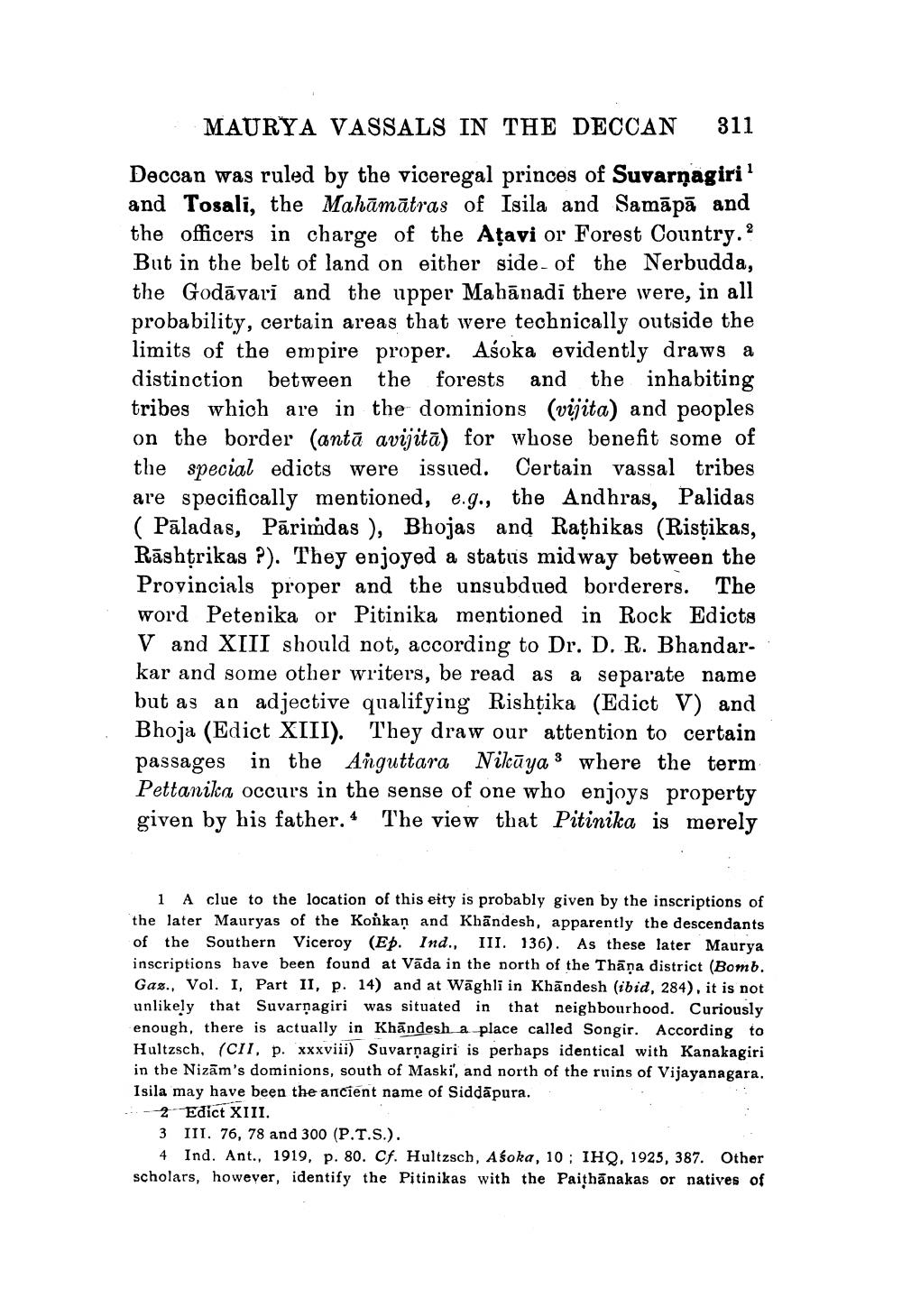________________
MAURYA VASSALS IN THE DECCAN
Deccan was ruled by the viceregal princes of Suvarnagiri1 and Tosali, the Mahāmātras of Isila and Samāpā and the officers in charge of the Aṭavi or Forest Country.2 But in the belt of land on either side of the Nerbudda, the Godavari and the upper Mahanadi there were, in all probability, certain areas that were technically outside the limits of the empire proper. Aśoka evidently draws a distinction between the forests and the inhabiting tribes which are in the dominions (vijita) and peoples on the border (anta avijita) for whose benefit some of the special edicts were issued. Certain vassal tribes are specifically mentioned, e.g., the Andhras, Palidas (Paladas, Parimdas ), Bhojas and Rathikas (Ristikas, Rashṭrikas ?). They enjoyed a status midway between the Provincials proper and the unsubdued borderers. The word Petenika or Pitinika mentioned in Rock Edicts V and XIII should not, according to Dr. D. R. Bhandarkar and some other writers, be read as a separate name but as an adjective qualifying Rishțika (Edict V) and Bhoja (Edict XIII). They draw our attention to certain passages in the Anguttara Nikaya where the term Pettanika occurs in the sense of one who enjoys property given by his father. The view that Pitinika is merely
311
1 A clue to the location of this eity is probably given by the inscriptions of the later Mauryas of the Konkan and Khandesh, apparently the descendants of the Southern Viceroy (Ep. Ind., III. 136). As these later Maurya inscriptions have been found at Vada in the north of the Thaņa district (Bomb. Gaz., Vol. I, Part II, p. 14) and at Waghli in Khandesh (ibid, 284), it is not unlikely that Suvarnagiri was situated in that neighbourhood. Curiously enough, there is actually in Khandesh a place called Songir. According to Hultzsch, (CII, p. xxxviii) Suvarnagiri is perhaps identical with Kanakagiri in the Nizam's dominions, south of Maski, and north of the ruins of Vijayanagara. Isila may have been the ancient name of Siddapura.
2 Edict XIII.
3
III. 76, 78 and 300 (P.T.S.).
4 Ind. Ant., 1919, p. 80. Cf. Hultzsch, Aśoka, 10: IHQ, 1925, 387. Other scholars, however, identify the Pitinikas with the Paithanakas or natives of




